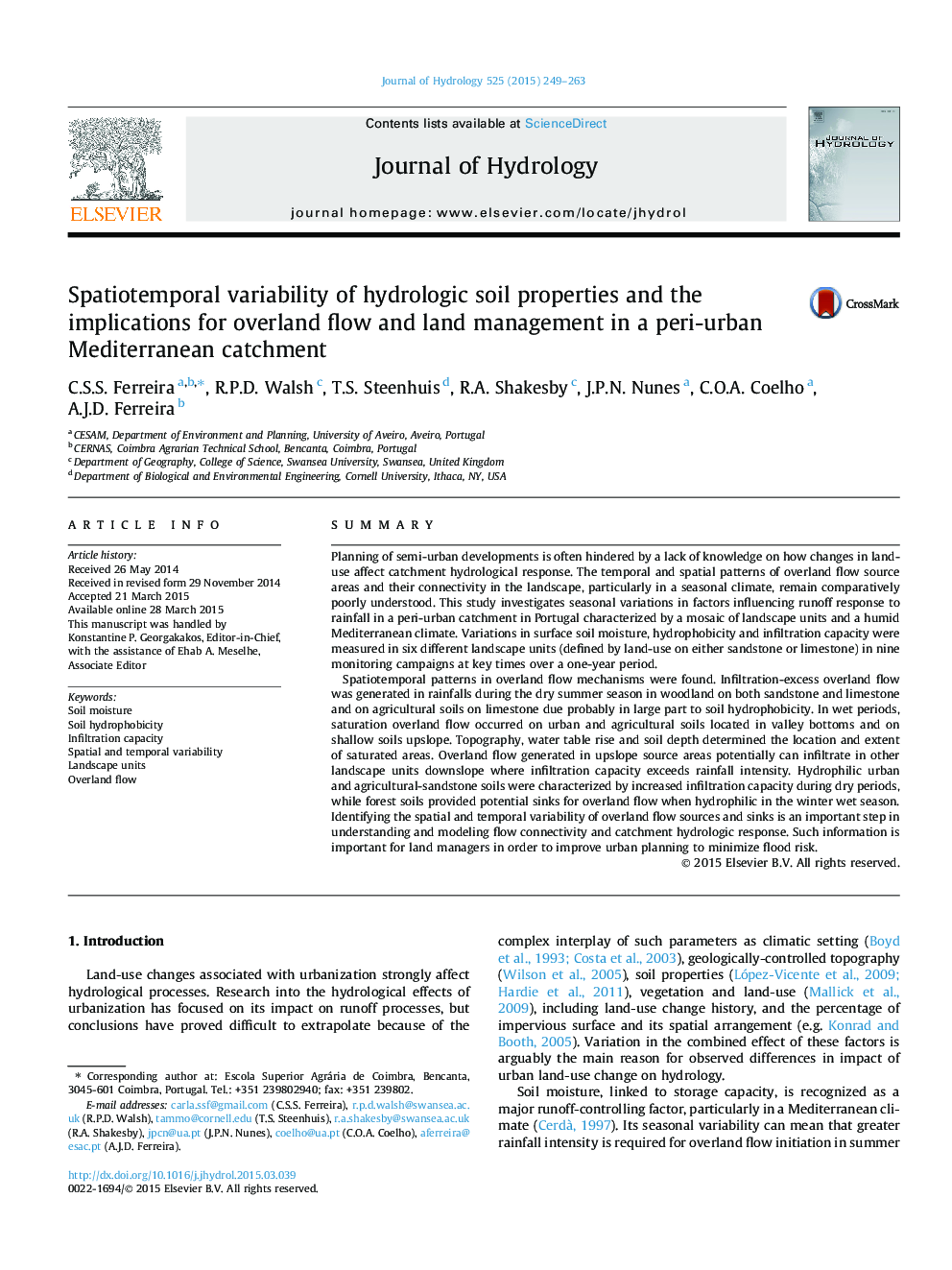| کد مقاله | کد نشریه | سال انتشار | مقاله انگلیسی | نسخه تمام متن |
|---|---|---|---|---|
| 6410596 | 1629925 | 2015 | 15 صفحه PDF | دانلود رایگان |
- Variability of soil moisture, hydrophobicity and soil matrix infiltration capacity.
- Focus in a peri-urban Mediterranean catchment.
- Distinct landscape units show different temporal patterns.
- Understand how soil properties vary and its implications for flow connectivity.
- Implications for hydrological modeling and urban planning are discussed.
SummaryPlanning of semi-urban developments is often hindered by a lack of knowledge on how changes in land-use affect catchment hydrological response. The temporal and spatial patterns of overland flow source areas and their connectivity in the landscape, particularly in a seasonal climate, remain comparatively poorly understood. This study investigates seasonal variations in factors influencing runoff response to rainfall in a peri-urban catchment in Portugal characterized by a mosaic of landscape units and a humid Mediterranean climate. Variations in surface soil moisture, hydrophobicity and infiltration capacity were measured in six different landscape units (defined by land-use on either sandstone or limestone) in nine monitoring campaigns at key times over a one-year period.Spatiotemporal patterns in overland flow mechanisms were found. Infiltration-excess overland flow was generated in rainfalls during the dry summer season in woodland on both sandstone and limestone and on agricultural soils on limestone due probably in large part to soil hydrophobicity. In wet periods, saturation overland flow occurred on urban and agricultural soils located in valley bottoms and on shallow soils upslope. Topography, water table rise and soil depth determined the location and extent of saturated areas. Overland flow generated in upslope source areas potentially can infiltrate in other landscape units downslope where infiltration capacity exceeds rainfall intensity. Hydrophilic urban and agricultural-sandstone soils were characterized by increased infiltration capacity during dry periods, while forest soils provided potential sinks for overland flow when hydrophilic in the winter wet season. Identifying the spatial and temporal variability of overland flow sources and sinks is an important step in understanding and modeling flow connectivity and catchment hydrologic response. Such information is important for land managers in order to improve urban planning to minimize flood risk.
Journal: Journal of Hydrology - Volume 525, June 2015, Pages 249-263
